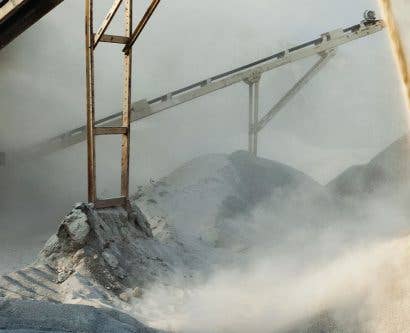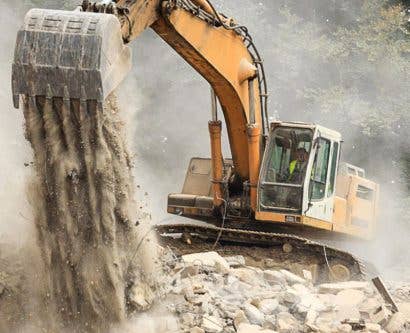Toolbox Talks in Construction: Guidance on Meeting Topics and Resources
Providing training and developing people’s understanding about health and safety is vital in the construction industry, as there are a variety of high-level risks. The primary way your business should be doing so is through formal training, such as practical sessions for workplace-specific equipment and hazards for example, together with further awareness-level training if required, such as online health and safety courses.
However, supplementing formal training with regular toolbox talks is incredibly effective for cementing people’s knowledge and promoting a solid safety culture.
This article will explain what toolbox talks are and why they are beneficial for developing your workplace’s awareness of health and safety. It will provide some examples of important topics you could cover in construction toolbox talks, as well as some tips for maximising each session’s effectiveness.
What are Toolbox Talks?
Toolbox talks are short presentations or discussions with a group of workers about a specific health and safety topic. They are usually designed to refresh people’s knowledge and then start the work day with safety at the forefront of everyone’s minds.
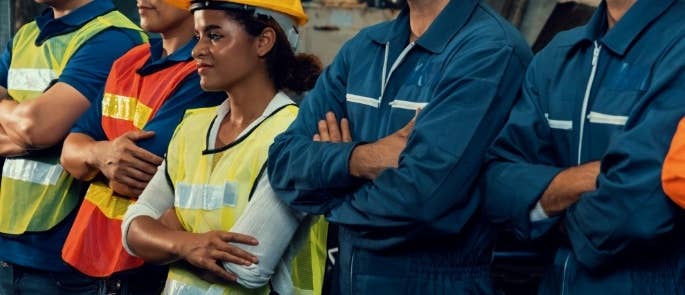
Taking this proactive and frequent approach to reinforcing safety information has proven to be effective at improving health and safety in the workplace. In fact, a 2017 report found that companies who conduct toolbox talks daily had a 64% reduction in total incident rates and those who carried them out weekly had a 20% reduction, as compared to those that conducted them only monthly.
As mentioned earlier, toolbox talks are useful for reinforcing people’s health and safety knowledge and helping to build a safety culture in the workplace. They are effective because they actively engage workers with the information in bitesize amounts and, ideally, on a frequent basis, which promotes knowledge retention.
Note that toolbox talks are not a substitution for formal compliance training and on-site instruction, but because workers typically only received these once a year or in some cases less often, toolbox talks are an excellent supplement in between formal training sessions to reinforce knowledge.
All of this combined can help with complying with the CDM Regulations (Construction (Design and Management) Regulations 2015) – see the relevant extract below – and most importantly keep people healthy and safe.
A contractor must provide each worker under their control with appropriate supervision, instructions and information so that construction work can be carried out, so far as is reasonably practicable, without risks to health and safety. The information provided must include […] information on risks to health and safety.
– CDM Regulations, Duties of Contractors, Section 15, Regulation 8
How are Toolbox Talks Carried Out on Construction Sites?
The following points provide guidance and tips on how to carry out toolbox talks on construction sites effectively.
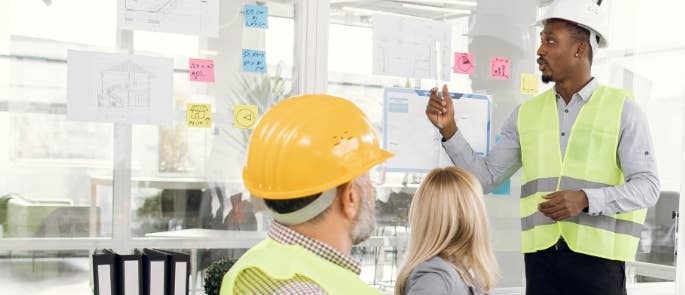
- Senior or experienced members of the team typically lead toolbox talks on construction sites, such as supervisors or the crew leader, with a small group of workers (usually around 10 people). Running them with a small group ensures people have the opportunity to ask questions in the time available.
- Using presentations, videos, or PDFs is useful to help convey the information clearly and engagingly to workers. You may also use handouts if you have additional information and don’t want the session to run too long. Alternatively, you could save the information for a follow up toolbox talk another time.
- Toolbox talks should ideally be run at the start of the work day. This puts the safety considerations at the forefront of everyone’s minds while they get started on work.
- They should be run frequently, such as once a week or daily if doable. Doing so will maximise their effectiveness and help to create a strong safety culture.
- They should typically be around 10 to 15 minutes, but could also be up to 30 minutes. The aim is for them to be brief and to the point, so people receive all the key information they need and don’t lose focus.
- They should each be about a single health and safety topic. As they are short sessions, multiple topics would be spread too thin and difficult for people to retain. We’ll look at examples of topics to cover later in this article.
- Records of toolbox talks should ideally be kept. It’s not legally required, but doing so is great for keeping track of your business’s training and so you know what you have and haven’t covered recently. Pass around an attendance sheet during the session, or make a note yourself, and include this with some brief details of what you covered. Sitemate provides a good example template.
A particularly important consideration is that toolbox talks should be relevant and relatable to the audience.
For example, if workers will carry out a lot of manual handling tasks that day, refresh people’s knowledge about the risks and safe techniques of manual handling in a toolbox talk first thing before work. Likewise, retention and engagement will be better when you put it into context, such as by tailoring it to the specific equipment and loads that people will have to handle on site that day.
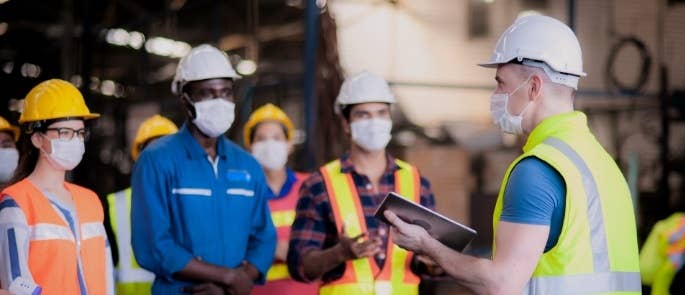
You should also focus on proactivity and prevention, rather than reacting to past on-site incidents or those you’ve seen in the news, which can come across as fear-mongering. Focus on the positive aspects of people following health and safety on your site, rather than making them afraid of what could or has happened.
9 Examples of Topics that Construction Site Toolbox Talks Could Cover
Toolbox talks can cover a huge range of health and safety topics, especially for construction sites, though keep in mind that they should focus on one topic at a time. The important thing is that they are brief and provide clear, actionable guidance to workers, based on subjects that are relevant to their work activities and the risks they face.
Here are 9 examples of toolbox topics for construction, as well as some further resources:
1. Asbestos Awareness
Asbestos-containing materials are still present in many buildings that were built before the year 2000. Construction workers may come across these during their work, such as when demolishing old buildings, and it’s absolutely vital that they know how to work around it safely. Exposure to asbestos fibres can lead to lung cancers, and despite the fact that asbestos use was banned in 1999, people are still developing conditions due to past exposure – two decades after its discontinuation.
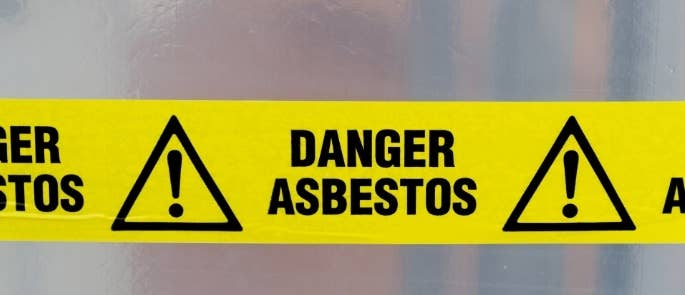
If people need to carry out work around asbestos-containing materials, your toolbox talk first thing that day could involve refreshing their knowledge of asbestos risks and what they should or shouldn’t do to prevent exposure. For example, if they are not qualified to remove it, you could cover where any known asbestos-containing materials are on site and what the risks are of disturbing them, and how they should avoid doing so.
Need an Asbestos Course?
Our Asbestos Awareness Course provides guidance about asbestos risks and how to prevent people from being exposed to them, which may be useful for those looking to run toolbox talks, as it will help to refresh your knowledge and you can use the information to inform your toolbox talk.
2. Fire Safety
It’s crucial that people understand how to minimise fire safety risks on your construction site, and that they understand how to follow evacuation procedures in an emergency.

A toolbox talk for fire safety could refresh people’s knowledge about how fires start, what type of fire hazards are present on your site, and how people should control these – for example, with proper management of rubbish on site and safe practices when using tools that could create sparks. You could also refresh people’s awareness of how to evacuate during a fire and where the assembly point is on site, as well as remind fire wardens what responsibilities they have.
Need a Fire Safety Course?
Our Fire Safety course provides guidance about how fires start and how to minimise the risks in workplaces, which may be useful for those looking to run toolbox talks about this topic. It will help to refresh your knowledge and you can use the information to inform your toolbox talk.
3. Preventing Slips, Trips, and Falls
Slips, trips, and falls from the same height are one of the biggest causes of work-related accidents and injuries every year. The Health and Safety Executive (HSE) states that several thousand construction workers are injured each year following a trip or slip whilst at work on a building site.
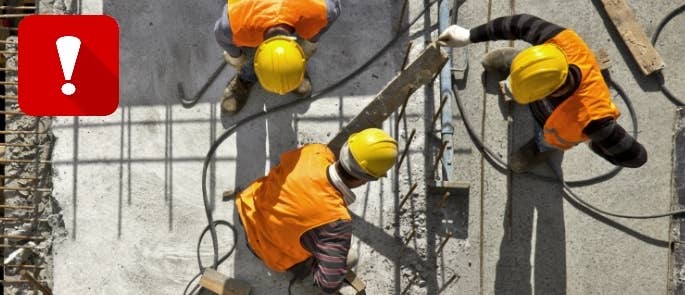
Your toolbox talks on slips, trips, and falls could cover the common hazards on your site that people should look out for, as well as what actions they should take to help minimise these risks, such as watching their step and properly managing materials and waste around the site.
The HSE has a dedicated booklet about this topic and provides a video for use in toolbox talks.
Need a Slips, Trips, and Falls Course?
Our Slips, Trips, and Falls course provides guidance about common slips, trips, and falls risks in workplaces, which may be useful for those looking to run toolbox talks about this topic. It will help to refresh your knowledge and you can use the information to inform your toolbox talk.
4. Working at Height Safely
Working at height is an incredibly high-risk work activity and may be common on your construction site, so it’s vital that everyone knows how to do so safely, whether they’re a few feet off the ground or several. This includes the use of ladders and scaffolding.
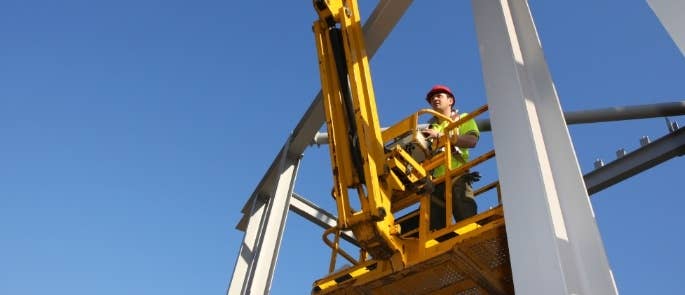
A toolbox talk for working at height could cover common areas of risk on your site and remind people of what procedures they should follow, including the safe use of any equipment to help them work at height, such as scissor lifts. It could also explain the risks posed by ladders and how to set up and stand on them safely. Likewise, you could cover the risks of working on scaffolding and emphasise the importance of correctly setting it up, e.g. with suitable guardrails.
Need a Working at Height Course?
Our Working at Height and Ladder Safety courses provide guidance about how to work at height and on ladders safely, which may be useful for those looking to run toolbox talks about this topic. We also have a LOLER course if you use any equipment on site for lifting people who need to work at height. These courses will help to refresh your knowledge and you can use the information contained in them to inform your toolbox talks.
5. Mental Health
Discussing mental health openly and having suitable support in place is vital for any workplace, but is particularly so for construction sites. The construction industry has one of the highest rates of suicide in any industry. Studies show that 75% of suicides in the UK are committed by men, and male construction workers are 3 times more likely to commit suicide than the average man in the UK.
Work-life balance, unrealistic expectations, and a culture of feeling unable to voice concerns are frequently cited as reasons for poor mental health amongst construction workers. It’s therefore vital that senior staff on construction sites pay close attention to people’s workload and that they help to break down the barriers that men (and people in general) often face with opening up about how they feel.
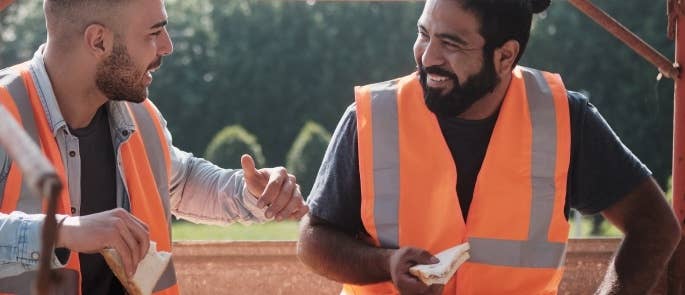
Use toolbox talks as an opportunity to emphasise that there is nothing wrong with opening up and that workers shouldn’t feel afraid to talk to colleagues and senior staff about work concerns. The charity Mates in Mind, which aims to help businesses improve mental health awareness and break the stigma associated with it, could help to inform the contents of your session. You could also promote it as a resource for people to educate themselves about mental health further beyond the talk.
For further advice about mental health in construction, which could help to inform your toolbox talk, check out our dedicated article: Managing Occupational Health in Construction
6. Manual Handling
Manual handling is often a central part of working on construction sites, but this physical aspect of the job can pose a real risk to workers’ wellbeing if not effectively controlled. As the HSE states, injuries associated with manual handling are not just an inevitable part of work – they can be prevented with good planning, safety practices, and control measures.
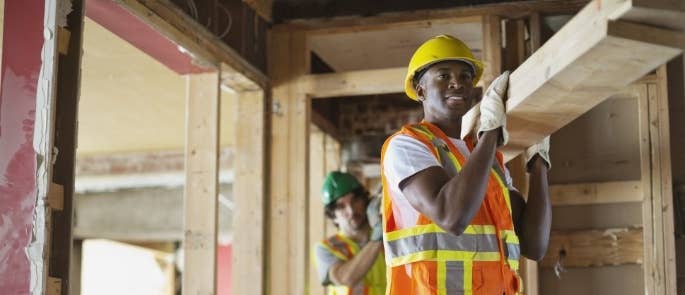
Use toolbox talks to remind people of the risks posed by manual handling activities, which is primarily musculoskeletal disorders. These develop over a prolonged period of time, so people may not realise they’re overdoing it until the damage is already underway. You could remind people of what weight limits they should follow, how to adopt good techniques, and how to use manual handling aids.
Need a Manual Handling Course?
Our Manual Handling course provides guidance about the risks that manual handling activities can pose to the body, such as musculoskeletal disorders, and explains how to adopt good techniques when carrying out manual handling activities, as well as how to use any manual handling aids safely. This may be useful for those looking to run toolbox talks about this topic. It will help to refresh your knowledge and inform any toolbox talks you wish to run.
7. Hazardous Weather and Night Working
All sorts of unfavourable weather conditions can pose risks to construction workers, from cold and hot temperatures, to heavy rain and lightning, to high winds, to low visibility and night working. For example, hot weather can cause health issues if workers are continuously exposed, from a mild sunburn to more serious, long-term conditions like skin cancer. High winds can affect the stability of equipment and low visibility, such as when working at night or when there is heavy fog, can make operating vehicles dangerous.
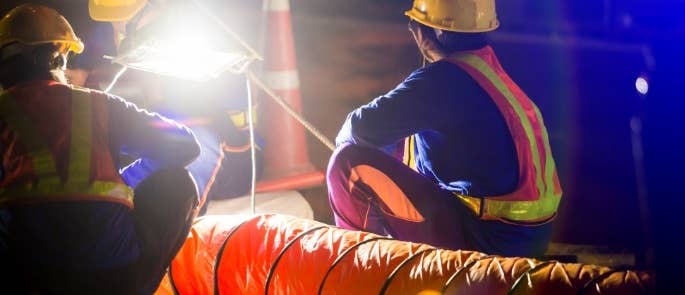
You should cover the control measures that are in place to combat these issues in a toolbox talk for hazardous weather and night working. Make people aware of the risks to their health that they may face and what they should do while on site to protect themselves and others, including procedures for postponing work if weather conditions are too hazardous.
You can find further guidance about outdoor working on the HSE website.
8. Hazardous Substances
Construction work can involve or generate numerous hazardous substances that can harm workers if inhaled or touched. This includes harmful dusts, cement, lead, solvents, and more. For example, frequent exposure to cement can cause occupational dermatitis, while solvents from paints can put workers at risk of occupational asthma. Silica is a particularly noteworthy hazardous dust, which workers may be exposed to when sanding, drilling, and grinding and can cause serious damage to the lungs.
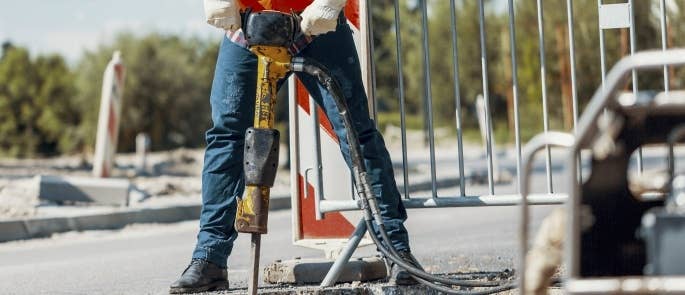
Use a toolbox talk to remind workers of the hazardous substances they may be exposed to, or that work activities may generate, while they’re working on site. Reinforce the importance of following safety procedures to protect themselves and others from exposure to these, including wearing PPE where necessary, such as respiratory protective equipment (RPE) and gloves.
Need a Hazardous Substances Course?
Our COSHH course provides guidance about common hazardous substances risks in workplaces and how to control them. The course may be useful for those looking to run toolbox talks about this topic. It will help to refresh your knowledge and you can use the information to inform your toolbox talk.
9. Environmental Awareness
Construction sites generate waste and can impact the environment in a variety of ways. Work should be carried out with consideration of any environmental impacts it could have on the surrounding area and wildlife. Likewise, you should be conscious of any impact work could have on the local populace, such as noise or material pollution.
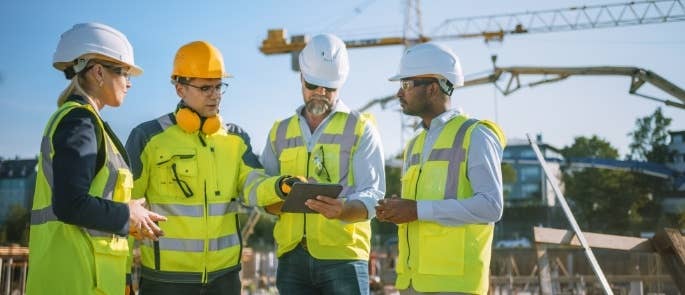
You could use toolbox talks as an opportunity to remind workers of the procedures you have in place for minimising the work’s environmental impact, as well as processes for accidental spillages and how to minimise the consequences. Another example of a control you could remind people of is to turn off noisy vehicles and machinery when not in use if you are near a public area, to reduce noise pollution.
Remember to also ensure people understand construction waste disposal rules, as there are legal requirements around this. You can find guidance on construction waste in our dedicated article: How to Dispose of Construction Waste
There are so many more topics you could cover in construction toolbox talks beyond these 9 examples, like first aid; vehicle and traffic safety; confined spaces; using equipment, tools, and appliances; personal protective equipment; electrical safety; falling objects hazards; emergency and rescue procedures; excavations; noise hazards; and tons more. You can find examples online of what to contain in a session, for example at this site and on the HSE page for toolbox talks.
After reading the above examples, and the advice for how to run them effectively, you should now be in a good position to host toolbox talks regularly on your construction site. Remember to always tailor the topic to your specific site and put the information into the context of your site’s activities and risks. This will aid retention and will support your overall aim of promoting health and safety.
What to Read Next:
- Managing Health and Safety Training
- Accident and Incident Investigation Training
- PPE in Construction: Safety Guidance and Checklist
- Pollution from Construction: What are the Types & How Can We Prevent It?
- Dust Hazards in Construction: Importance of Managing Risks and RPE
- How to Build Relationships in Construction
- LOLER Inspection Checklist Sheet
- Banksman Signals: Free Poster
- Safely Securing Ladders: Guidance & Procedure
- Ten Common Construction Site Hazards
- What is Effective Communication in Construction?
- CDM Regulations Quiz
- What is a Banksman? Duties and Responsibilities
- Which Equipment Types Do The PUWER Regulations Cover?
- Careers in Construction Industry: Opportunities and Roles
- A Ladder Inspection Checklist: Free Template
- Quality Assurance in Construction
Search ‘construction’ in our Hub search bar to find more articles for you.






